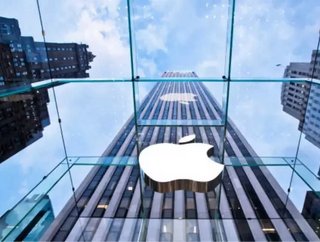Steve Jobs & Apple: The Accidental Heroes Of Healthcare

Steve Jobs and Apple products have changed the face of healthcare. Before the launch of the iPhone and later the iPad, the vast majority of healthcare data was stored in paper flies. The only technology used by doctors and medical professionals was clunky and cumbersome and very few enjoyed using it, often opting for paper equivalents. Aside from medical equipment, doctors and nurses avoided using technology during their working week. That changed when the first iPhone was launched and therefore many changes in the healthcare tech landscape – the mass uptake of EMRs, the increasing use of medical apps and virtual patient / doctor communication, to name just a few can be directly attributed to Apple.
READ THE APRIL EDITION OF HEALTHCARE GLOBAL HERE
An Apple A Day Keeps The Doctor Away
A recent study by Manhattan Research found that 75 percent of physicians owned at least one Apple product, rendering the saying ‘an Apple a day keeps the doctor away’ quite untrue. A later study conducted by Vitera Healthcare also stated that 60 percent of doctors surveyed used an iPhone for work and 48 percent owned an iPad. Physician, by and large love Apple products and use them in a professionals environment.
Apple’s products sparked mass uptake of mobile devices and smartphones, and with that came an insurgence of applications, opening the doors for physicians to instantly access a world of medical information at point of care.
Apple: Training Future Physicians
Apple products have not only been utelised at point of care by trained medical professionals. Yale University's School of Medicine did away with paper materials for training upcoming physicians opting instead to provide its students with iPads and wireless keyboards.
Read Related Articles In Healthcare Global
- Medical Devices Changing Doctor Patient Communication
- Healthcare Execs Are Increasingly Relying On Technology
- Video Calls Facilitate Doctor / Patient Communication
- mHealth App Market To Be Worth $26 Billion By 2017
Facilitating Remote Healthcare
Apple products have facilitated the growth of remote healthcare; just a few months ago, the first ever hospital robot received FDA approval to deliver patient care, and guess what the main component of the device was… an iPad. The iRobot is fitted with an iPad as is the doctor. Via FaceTime the doctor can communicate with patients remotely, allowing him to visit more patients during a working day.
Remote healthcare can also be extended to rural location for example in Africa, where doctors can reach cut-off rural communities via video link to provide vital healthcare. Video healthcare has also been used during the aftermath of natural disasters, where specialist doctors can survey the scene much quicker than if they had to travel to the location.

The late Steve Jobs revolutionized the healthcare industry
Digital Imaging
Use of Apple's products goes beyond serving as a reference and communication tool, though. An application that allows radiologists to view MRIs as well as CT, PET, and SPECT scans on iPhones and iPads received FDA approval in 2011. More recently, the FDA cleared the way for privately held Welch Allyn to connect its portable ophthalmoscope to an iPhone for doctors to view retinal images using the company's app.
MORE Related Content From Healthcare Global
- How The iPad Has Revolutionized Healthcare
- Apple's iWatch To Revolutionize The Healthcare Industry
- mHealth Could Save More Than 1M Lives In Africa
iPatients
Apple perhaps also unwittingly opened new horizons for patients also. By April 2012, the App Store included more than 13,600 health-related applications. For example, Vital Art and Science recently gained FDA approval to sell its myVisionTrack product, which enables people with macular degeneration and other degenerative eye diseases to monitor their vision at home with their iPhone. The application automatically alerts a healthcare professional if visual function appears to be deteriorating significantly.
Another app, SkinVision, allows individuals to take pictures of moles and other skin conditions and receive an instant analysis of risk using an algorithm that dermatologists helped develop. SkinVision helps the person find a dermatologist if needed. The significance of this capability can be best understood by looking at melanoma survival rates. When melanoma is caught early, five-year survival rates can be as high as 97 percent. If not caught early, those survival rates drop to 20 percent or less.
No Signs Of Slowing Down
While it's true that Apple products aren't the only ones used in healthcare, the company's devices still dominate the industry. And these products ushered in a revolution in how medical professionals and patients access data and communicate with each other.
Now, many speculate that Apple's next major product could be an iWatch. If so, yet another transformation could occur as tracking of health information becomes even more convenient and transparent. The revolution continues.






